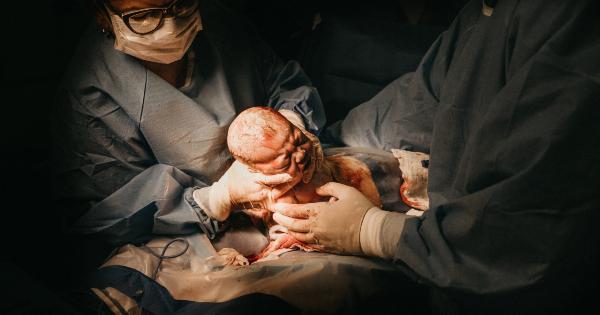Premature infants, also known as preemies, face numerous challenges due to their underdeveloped organs and vulnerable immune systems.
Many premature infants require long stays in neonatal intensive care units (NICUs), where they receive specialized care to give them a fighting chance at survival. However, researchers have recently made a breakthrough that could revolutionize the way premature infants are treated.
The Need for a Solution
Preemies are often placed in incubators to protect them from infections and provide a controlled environment for their delicate bodies.
However, despite the best efforts of medical professionals, these incubators cannot fully replicate the conditions of the mother’s womb, which poses a significant risk to the infants’ development.
Scientists have been working tirelessly to find a solution that mimics the womb environment and accelerates the development of premature infants.
And now, after years of research and experimentation, they have created an artificial matrix that shows promising results.
Understanding the Artificial Matrix
The artificial matrix is a specially designed structure that replicates the conditions of the mother’s womb. It consists of a sterile and biocompatible material that can support the growth and development of premature infants.
The matrix provides a suitable environment for their organs to mature and helps strengthen their immune systems.
The matrix is carefully engineered to provide optimal thermal regulation, humidity, and oxygen levels. It also incorporates mechanical movements, such as gentle vibrations, to simulate the movements experienced by the infants in the womb.
These movements are crucial for the development of their sensory systems and motor skills.
The Benefits of the Artificial Matrix
The introduction of the artificial matrix brings several benefits for premature infants:.
1. Enhanced Organ Development
The womb-like environment created by the artificial matrix supports the growth and maturation of premature infants’ organs.
It can improve lung function, digestive system development, and brain development, reducing the risk of long-term health complications.
2. Reduced Time in Neonatal Intensive Care Units
With the aid of the artificial matrix, premature infants can achieve developmental milestones faster, shortening their stay in the NICU. This not only leads to cost savings for families but also frees up valuable resources in hospitals.
3. Lower Risk of Infections
Incubators, while essential in protecting premature infants, can also create an environment conducive to infections.
The sterile and controlled nature of the artificial matrix reduces the risk of infections, ensuring a healthier start for these vulnerable infants.
4. Improved Neurodevelopmental Outcomes
Premature infants are at a higher risk of neurodevelopmental delays and disorders. However, the artificial matrix aims to mitigate these risks by providing an environment that facilitates proper brain development.
This can contribute to improved cognitive functions and reduce the likelihood of long-term disabilities.
5. Enhanced Bonding Opportunities
Traditionally, parents of premature infants have limited physical contact due to the incubator setup.
The artificial matrix allows for more skin-to-skin contact, facilitating bonding and promoting emotional well-being for both the infants and their parents.
The Future of Premature Infant Care
This revolutionary development in premature infant care holds immense promise for the future. As scientists refine and improve the artificial matrix, it is expected to become a standard tool in neonatal care units worldwide.
However, further research and clinical trials are necessary to optimize the artificial matrix’s design and ensure its safety and effectiveness.
The goal is to create a solution that can be easily integrated into existing NICU infrastructure, enabling widespread adoption.
Conclusion
The creation of an artificial matrix replicating the conditions of the mother’s womb is a groundbreaking achievement in the realm of premature infant care.
This innovative solution has the potential to transform the lives of countless premature infants by providing them with a nurturing and supportive environment for optimal development.
While there is still progress to be made, scientists are optimistic about the future of this technology.
With continued advancements, the artificial matrix could soon become a vital tool in saving the lives of premature infants and improving their long-term outcomes.




























